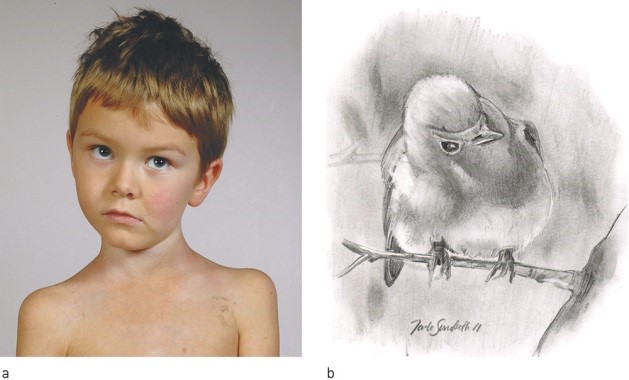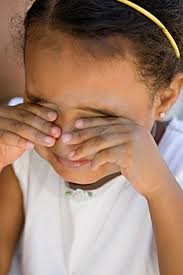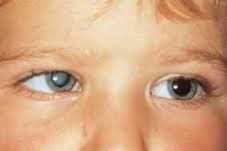Introduction
Vision problem in children is often neglected. It happens because they are too young to complain and to understand the real condition of clear or blurred vision. This issue is getting worst when some parents do not take the complaints seriously. Through their daily routine and activities, the vision problem in children can be identified especially by the aware parents.
In fact, children’s vision is very important and need to be stimulated from the beginning of life in order to develop a good and normal sensory. Delays in treatment may cause lifelong visual impairment.
Formation And Development Of The Baby’s Eyes
The baby’s eyes began to develop since two weeks in pregnancy. Within less than four weeks, all important structures of the eye start to form. At this vital moment, structures of the eye are fragile. For example, illegal usage of drugs, measles and other serious diseases during pregnancy may affect the eye’s structure to become abnormal. In 7 months of pregnancy, the nerves connecting the eye to the brain are begun to form.
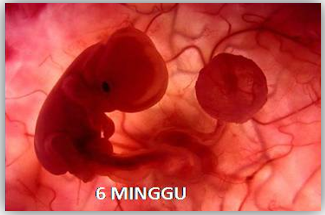 |
 |
| The structure of the eyes were visible | Baby starts blink the eyes and activity of the brain related to visual has functioned. |
At birth, the maturity of the human eye is only 70 percent and it has another 30 percent to develop into a normal organ. Thus, we still have to be aware and concern even though our baby was born perfectly without any physical disability. This is really important because any visual disturbance or damage could impact adversely on the development of children’s learning process
Vision Screening In Schools – Make It A Routine
Vision screening is a basic method to detect vision problems in children. It should be a routine for all children before entering school, regardless of the existence of complaints from them. Refractive error (sightedness) is not only depends on genetic factors but can be attributed to environmental factors such as having too much near task activities for example the use of computers, gadgets and doing revisions.
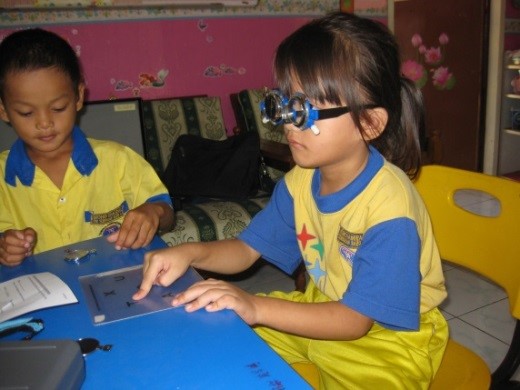 |
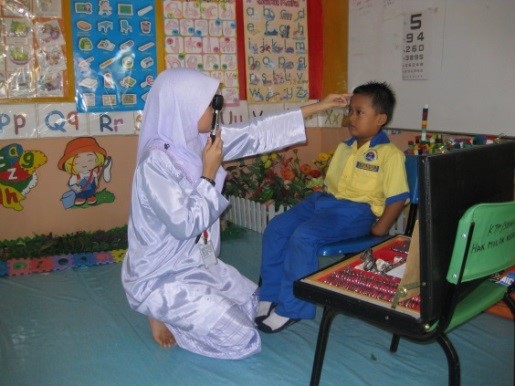 |
‘Pre-school Eye Screening’ program were performed to detect refractive errors in early stage
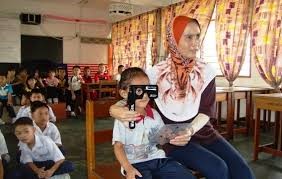 Teachers also can help the School Health Team in vision screening at school
Teachers also can help the School Health Team in vision screening at school
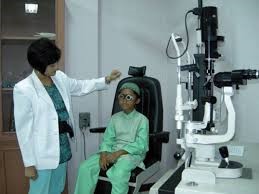 |
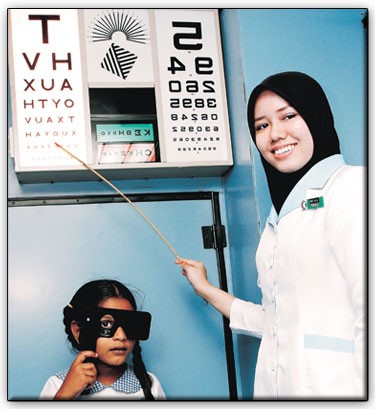 |
Parents also can bring their children to hospital or Optometry Clinic nearby to get a vision screening
There are many cases of children who have been placed in special schools or special class but unfortunately they do not have any either mental disorder or learning disability but they actually have a blurred vision that only needs spectacle correction. Therefore, children’s vision screening test is very important before they enter the school.
Signs And Symptoms
The children are unable to differentiate between normal and abnormal vision as they consider all views are normal. It makes sense why they do not complain any vision problems to their parents.
However, concerned parents or guardians are still able to identify their children’s vision problem by looking at the habits. Sometimes, the children’s complaint may give a clue about their vision level.
The Following Are The Symptoms Of Blurred Vision
1. Abnormal head posture (head tilt) while focusing, for example when watching television and reading.
3. Reading or writing at very close distance between face and reading material.
4. Always make mistakes or slow in copying the teacher’s writing on whiteboard/blackboard.
5. Often copying from friends nearby rather than copying directly from whiteboard/blackboard or prefer to go nearer to whiteboard/blackboard to copy.
6. Likes to watch television at close distance and tend to shrink their eye to focus on object at far distance
7. Always rub the eye even they are not sleepy and often to blink their eyes.
9. Watery eyes frequently
10. Like to close one eye while focusing such as when reading or watching television.
11. Avoiding or dislike to do near task activities such as coloring and reading as well as outdoor activities such as playing football.
12. Often complain of headaches or sore/tired eyes.
13. Difficult to estimate distance.
14. Complain of seeing objects into two (double vision).
The Factors That Contribute To Children’s Vision Problem
a) Refractive Error (sightedness)
Sightedness may begin as early as newborns or when a child or an adult. It can be affected by various factors such as heredity and environment. There are two types of common sightedness which are Myopia (short-sightedness) and Hyperopia (long-sightedness).
During school period, visual system of the children may also develop as well as physical growth. Therefore, annual visual screening is highly recommended. The change of spectacle power every 6 months to one year is actually normal during this period. This is because too much of near task activities such as reading and doing revision may induce the power of refractive error.
In order to control the problem, children are encouraged to have outdoor activities which have bigger and wider range of focus during their free time instead of indoor activities such as playing video games.
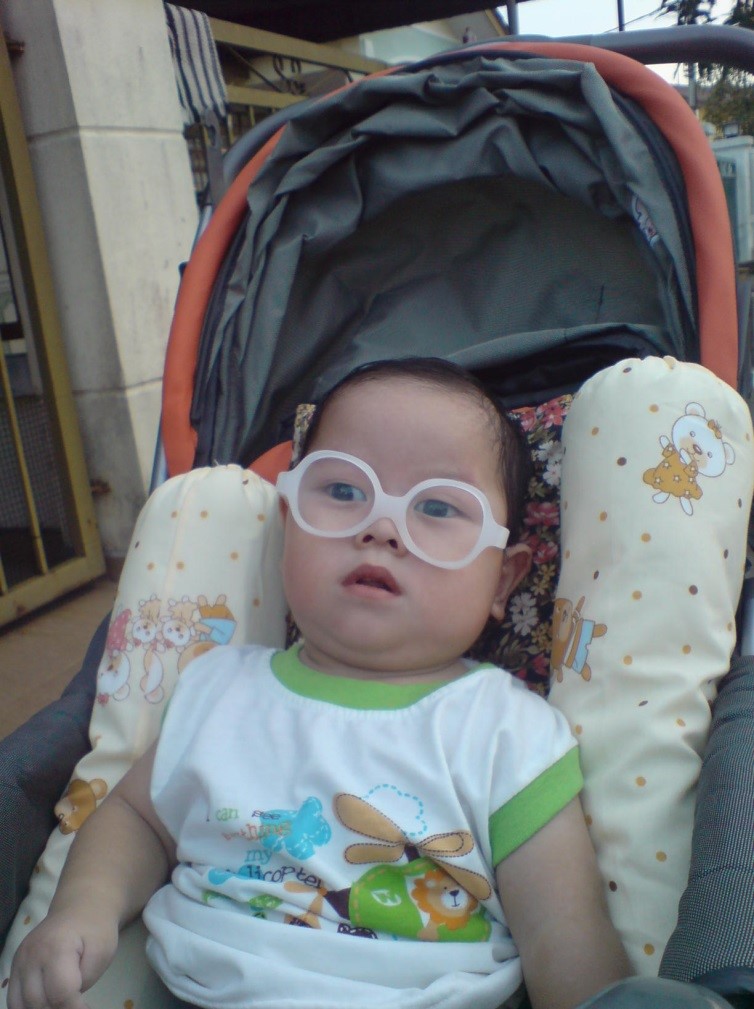 The use of spectacle would be advisable to the person based on the needs of visual function regardless of age.
The use of spectacle would be advisable to the person based on the needs of visual function regardless of age.
 Excessive usage of gadgets can be the cause of refractive error (sightedness)
Excessive usage of gadgets can be the cause of refractive error (sightedness)
b) Squint
Children with squint problem will have trouble to focus with both eyes on one object at the same time, which can lead to vision decrease or lazy eye (amblyopia). Squint occurs when the axis of the eyeball are not parallel and involve the movement of extra ocular muscles of the eye. It can happen to one eye or even both.
Children of one year old and above with squint, should get the eyes tested. Despite squint is not infectious, but it will remain and even larger in degrees if they are not treated at early stage. When the squint degree is being too large, the surgical procedure may be needed.
c) Amblyopia (lazy eye)
Amblyopia is not an eye disease. It also can not be seen with naked eye but can be detected through the eye screening test. Amblyopia is abnormality of visual acuity (sharpness level of vision) even with usage of spectacle as well as contact lens without any damage or disease of the eyes.
Amblyopia occurs due to untreated refractive error since early age. This condition may weaken the retina (nerves of the eye) as the light entering the eye is not focused precisely on the retina. Amblyopia can also cause squint. The amblyopic eye will remain blurred for the whole life even with the use of spectacle, contact lens or even refractive surgery procedure such as LASIK.
d) Ptosis (dull eye)
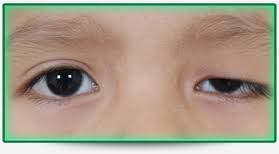 Ptosis is the situation when the upper eyelid falls or drops lower than it supposed to be. It can happen either to one eye or both. Ptosis can be worst when the muscles are fatigue.
Ptosis is the situation when the upper eyelid falls or drops lower than it supposed to be. It can happen either to one eye or both. Ptosis can be worst when the muscles are fatigue.
Congenital Ptosis is a type of ptosis which occurs since baby.
Usually, people will confuse between ptosis and amblyopia (lazy eye) due to its appearance. Amblyopia is undetectable with naked eye but we can easily see the ptosis. Significant and untreated ptosis will prevent the entry of light into the eye and may cause amblyopia.
e) Eye disease : Cataract
Cataract occurs when crystalline lens in the eye lost its transparency. Pupil will appear white if the cataract is too thick. It is always associated with aging process, but it can also happen to babies and children. Cataract in newborn baby is called Congenital Cataract. It has always been associated with rubella infection in pregnant woman. Therefore, rubella immunization comes very important to all women.
In children, Secondary Cataract is usually happen. It caused by accident or injury such as punctured by nail, pencil or grounded by hockey ball.
There are some other eye diseases that may affect the children’s vision such as Congenital Glaucoma and corneal scar which occurred from injury or previous infection.
As a conclusion, vision problem in children is very important to be treated in early age in order to avoid any disturbance to the development of visual function that can affect learning process, social and emotion development, employment opportunities and quality of life in the future.
Advice / Guide
- Ensure your children get an eye screening as early as 3 years old of age
- Concern about healthcare since pregnancy and take the vaccine as recommended
- Concern about your child’s complaints and their visual habit
- Ensure your children has a healthy and balance activities
- Accept your child’s visual problem and seek the treatment at early stage
References
- Menjamin Visual Normal, Yeo Li Shian, http://www.kosmo.com.my/kosmo/content.asp?y=2009&dt=1218&pub=Kosmo&sec=Pesona&pg=ps_01.htm#ixzz3m7JfuqBG
- Masalah Penglihatan Kanak-kanak, Haliza Abdul Mutalib, 2013, ISBN 978-983-46-1025-8.
- Ptosis Kongenital, Mami Baby Magazine, Mac 2013
- Refractive Error and Visual Impairment in School-Age Children in Gombak District, Malaysia Pik-Pin Goh, Yahya Abqariyah, Gopal P. Pokharel, Leon B. Ellwein, Volume 112, Issue 4, Pages 678–685, April 2005
- Vision Problems of Preschool Children, http://www.allaboutvision.com/parents/preschool.htm
| Last Reviewed | : | 17 Disember 2015 |
| Writer | : | Pn. Fadhliah Binti Husin |
| Translator | : | Pn. Fadhliah Binti Husin |
| Accreditor | : | Pn. Nor’aini Binti Anuar |


